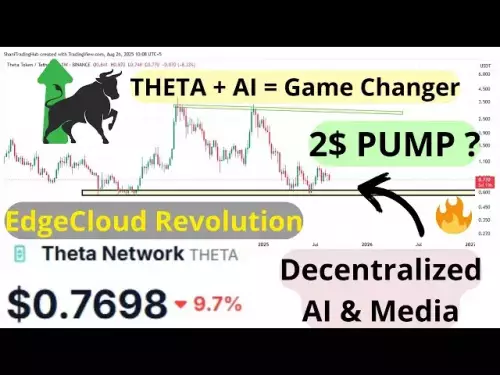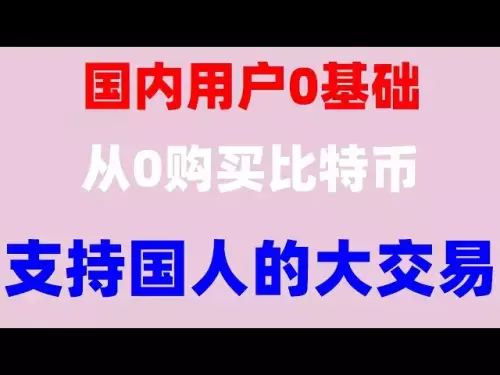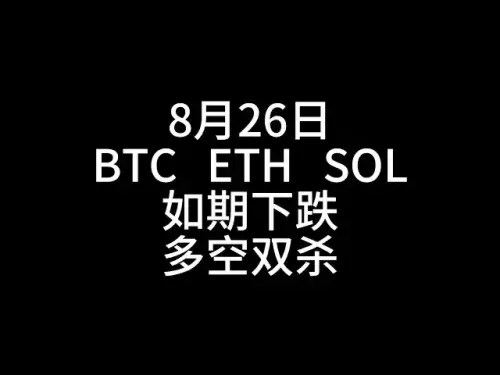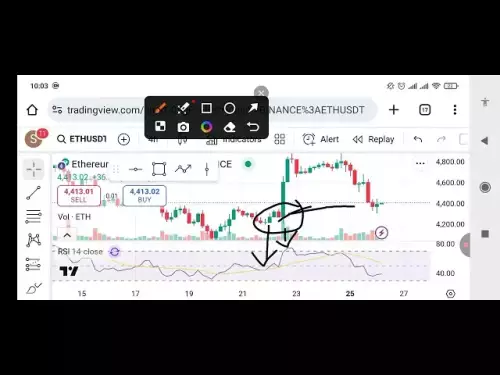-
 Bitcoin
Bitcoin $110800
-1.42% -
 Ethereum
Ethereum $4547
-0.61% -
 XRP
XRP $2.986
1.03% -
 Tether USDt
Tether USDt $1.000
0.03% -
 BNB
BNB $856.0
-1.07% -
 Solana
Solana $194.9
-0.89% -
 USDC
USDC $0.9999
-0.01% -
 TRON
TRON $0.3509
0.00% -
 Dogecoin
Dogecoin $0.2170
-0.40% -
 Cardano
Cardano $0.8636
-0.74% -
 Chainlink
Chainlink $24.20
-0.14% -
 Hyperliquid
Hyperliquid $47.83
5.63% -
 Stellar
Stellar $0.3923
-0.07% -
 Ethena USDe
Ethena USDe $1.001
0.03% -
 Sui
Sui $3.438
-0.29% -
 Bitcoin Cash
Bitcoin Cash $536.6
-4.11% -
 Hedera
Hedera $0.2409
1.83% -
 Avalanche
Avalanche $23.95
-0.03% -
 UNUS SED LEO
UNUS SED LEO $9.567
-0.35% -
 Litecoin
Litecoin $113.7
2.07% -
 Toncoin
Toncoin $3.128
-2.58% -
 Shiba Inu
Shiba Inu $0.00001240
0.68% -
 Cronos
Cronos $0.2087
31.23% -
 Polkadot
Polkadot $3.864
0.46% -
 Uniswap
Uniswap $9.832
-1.36% -
 Dai
Dai $0.9999
0.01% -
 Bitget Token
Bitget Token $4.636
2.24% -
 Monero
Monero $278.6
2.27% -
 Aave
Aave $329.5
2.13% -
 Pepe
Pepe $0.00001010
0.03%
Which is more sensitive, StochRSI or KDJ? Which should be used for short-term trading?
StochRSI, derived from RSI, is more sensitive for short-term crypto trading, while KDJ, with its J line, offers a balanced approach with fewer false signals.
May 24, 2025 at 03:28 pm
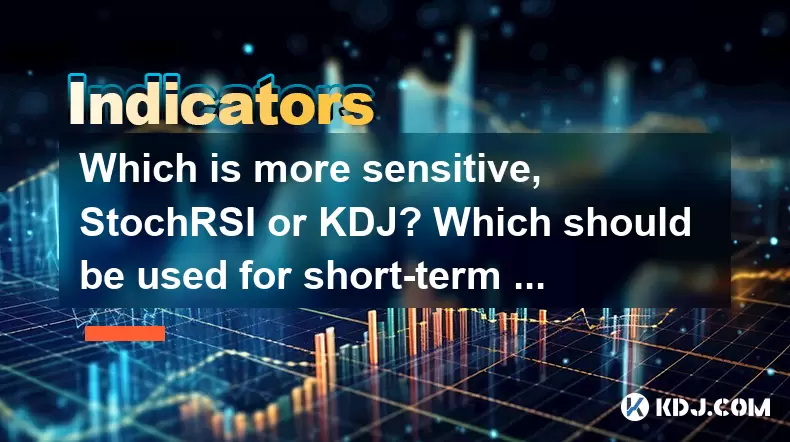
The debate between StochRSI and KDJ as technical indicators for short-term trading in the cryptocurrency market is a nuanced one. Both indicators are designed to help traders identify overbought and oversold conditions, but they differ in their construction and sensitivity. In this article, we will delve into the details of both indicators, comparing their sensitivity and suitability for short-term trading within the crypto space.
Understanding StochRSI
StochRSI, or Stochastic RSI, is a technical indicator derived from the Relative Strength Index (RSI). It is designed to provide a more sensitive measure of the RSI, which itself measures the speed and change of price movements. The StochRSI oscillates between 0 and 1, with readings above 0.8 considered overbought and readings below 0.2 considered oversold.
To calculate the StochRSI, the RSI value is first computed over a specified period (commonly 14 days). Then, the StochRSI is calculated as follows:
[ \text{StochRSI} = \frac{\text{RSI} - \text{Lowest Low RSI}}{\text{Highest High RSI} - \text{Lowest Low RSI}} ]
Where:
- Lowest Low RSI is the lowest RSI value over the lookback period.
- Highest High RSI is the highest RSI value over the lookback period.
The StochRSI is known for its sensitivity, which can lead to more frequent trading signals. However, this increased sensitivity can also result in more false signals, making it crucial for traders to use additional confirmation tools.
Understanding KDJ
KDJ is another momentum oscillator used to determine overbought and oversold conditions. It is similar to the Stochastic Oscillator but includes an additional component, the J line, which can provide more detailed insights into market momentum. The KDJ indicator consists of three lines: K, D, and J.
The KDJ is calculated as follows:
K Line:
[ K = \frac{\text{Current Close} - \text{Lowest Low}}{\text{Highest High} - \text{Lowest Low}} \times 100 ]D Line:
[ D = \text{SMA}(K, 3) ]
Where SMA is the Simple Moving Average over the last three periods.J Line:
[ J = 3D - 2K ]
The KDJ values range from 0 to 100, with readings above 80 considered overbought and readings below 20 considered oversold. The J line, in particular, is used to identify potential trend reversals, as it can move beyond the 0-100 range.
Sensitivity Comparison
When comparing the sensitivity of StochRSI and KDJ, it's important to understand how each indicator reacts to price movements.
StochRSI tends to be more sensitive due to its derivation from the RSI. It can quickly move from overbought to oversold conditions and vice versa, providing more signals for traders. This increased sensitivity can be advantageous for short-term traders looking to capitalize on quick price movements but can also lead to more false signals.
KDJ, while also sensitive, is generally considered less so than StochRSI. The inclusion of the J line provides additional context, which can help in filtering out some of the noise that StochRSI might be more prone to. The KDJ's sensitivity is more balanced, making it suitable for traders who want to identify overbought and oversold conditions but with a bit more stability.
Using StochRSI for Short-Term Trading
For traders who prefer to use StochRSI for short-term trading in the crypto market, here are some steps to follow:
- Identify Overbought/Oversold Conditions: Look for StochRSI readings above 0.8 to identify overbought conditions and readings below 0.2 to identify oversold conditions.
- Confirm Signals: Use additional indicators like moving averages or volume to confirm the signals provided by StochRSI. This can help reduce the likelihood of false signals.
- Trade Execution: When the StochRSI moves from overbought to oversold or vice versa, consider entering a trade in the direction of the new trend. For example, if the StochRSI moves from overbought to oversold, consider a long position.
- Exit Strategy: Set clear exit points based on the StochRSI returning to neutral levels (around 0.5) or other technical indicators.
Using KDJ for Short-Term Trading
For traders who opt for KDJ in their short-term trading strategy, here are some steps to follow:
- Identify Overbought/Oversold Conditions: Look for KDJ readings above 80 to identify overbought conditions and readings below 20 to identify oversold conditions.
- Analyze J Line: Pay attention to the J line, as it can move beyond the 0-100 range. A J line value significantly above 100 or below 0 can indicate strong momentum and potential trend reversals.
- Confirm Signals: Use other indicators like moving averages or trend lines to confirm the signals provided by KDJ. This can help validate the trading opportunities identified by the KDJ.
- Trade Execution: When the KDJ moves from overbought to oversold or vice versa, consider entering a trade in the direction of the new trend. For example, if the KDJ moves from overbought to oversold, consider a long position.
- Exit Strategy: Set clear exit points based on the KDJ returning to neutral levels (around 50) or other technical indicators.
Choosing Between StochRSI and KDJ for Short-Term Trading
When deciding which indicator to use for short-term trading in the cryptocurrency market, consider the following factors:
- Sensitivity: If you are looking for an indicator that provides more frequent signals and are willing to manage potential false signals, StochRSI might be more suitable. Its higher sensitivity can help you capture quick price movements.
- Stability: If you prefer a more balanced approach with fewer false signals, KDJ could be a better choice. The additional context provided by the J line can help in making more informed trading decisions.
- Confirmation: Regardless of which indicator you choose, always use additional confirmation tools to validate your trading signals. This can include other technical indicators, trend lines, or volume analysis.
Frequently Asked Questions
Q: Can StochRSI and KDJ be used together in a trading strategy?
A: Yes, StochRSI and KDJ can be used together in a trading strategy to provide a more comprehensive view of market conditions. By combining the sensitivity of StochRSI with the balanced approach of KDJ, traders can potentially improve the accuracy of their trading signals. For example, a trader might use StochRSI to identify potential entry points and KDJ to confirm the strength of the trend before entering a trade.
Q: How do I adjust the parameters of StochRSI and KDJ for different cryptocurrencies?
A: The parameters of StochRSI and KDJ can be adjusted based on the volatility and trading volume of different cryptocurrencies. For highly volatile cryptocurrencies, you might want to use shorter periods for both indicators to capture quick price movements. Conversely, for less volatile assets, longer periods might be more appropriate to filter out noise. Experiment with different settings and backtest your strategies to find the optimal parameters for your trading approach.
Q: Are there any specific time frames that work best with StochRSI and KDJ for short-term trading?
A: For short-term trading, time frames like 15-minute, 30-minute, or 1-hour charts are often used with StochRSI and KDJ. These time frames provide enough data for the indicators to generate meaningful signals while still being short enough to capture quick price movements. However, the best time frame can vary depending on the specific cryptocurrency and market conditions, so it's important to test different time frames and find what works best for your trading strategy.
Q: How can I avoid false signals when using StochRSI and KDJ for short-term trading?
A: To avoid false signals when using StochRSI and KDJ, consider the following strategies:
- Use Confirmation Indicators: Always use additional indicators like moving averages, trend lines, or volume analysis to confirm the signals generated by StochRSI and KDJ.
- Wait for Crossovers: For StochRSI, wait for the indicator to cross above 0.2 from below or below 0.8 from above before entering a trade. For KDJ, wait for the K line to cross the D line to confirm a signal.
- Monitor Market Conditions: Pay attention to overall market trends and news events that could affect price movements. Trading in the direction of the broader market trend can help reduce the impact of false signals.
- Backtest Your Strategy: Before using StochRSI and KDJ in live trading, backtest your strategy on historical data to understand how the indicators perform under different market conditions.
Disclaimer:info@kdj.com
The information provided is not trading advice. kdj.com does not assume any responsibility for any investments made based on the information provided in this article. Cryptocurrencies are highly volatile and it is highly recommended that you invest with caution after thorough research!
If you believe that the content used on this website infringes your copyright, please contact us immediately (info@kdj.com) and we will delete it promptly.
- Trump Family, Crypto, and Crypto.com: A New York Minute on the Latest Developments
- 2025-08-27 01:05:14
- Trump Family, Crypto, and Crypto.com: A New York Perspective on the Latest Developments
- 2025-08-27 00:45:12
- Rare Coin Mania: Bidding Wars and Value Increases That'll Make You Check Your Change
- 2025-08-27 01:10:12
- Crypto ETFs and Price Crashes: Navigating the Volatile Waters
- 2025-08-27 01:10:12
- Lyno AI Token Presale: Early Allocation Frenzy!
- 2025-08-27 01:15:12
- Meme Coins: BONK, WIF, and the Next Big Thing?
- 2025-08-27 01:25:12
Related knowledge
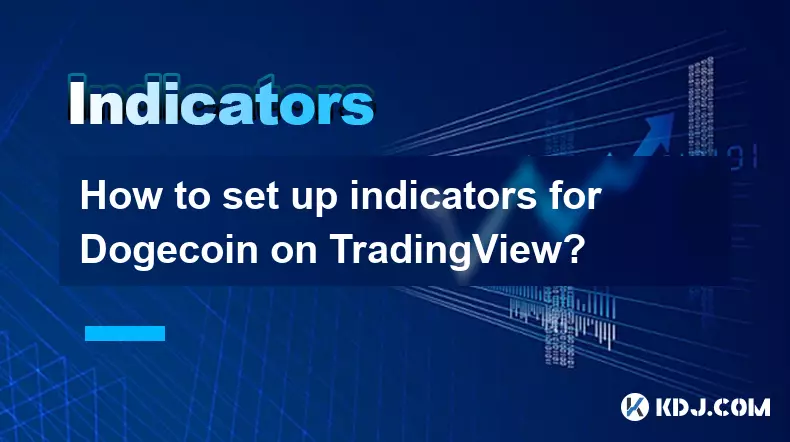
How to set up indicators for Dogecoin on TradingView?
Aug 25,2025 at 04:23pm
Understanding Dogecoin and TradingView1. Dogecoin, initially created as a meme-based cryptocurrency, has evolved into a widely traded digital asset. I...

What does it mean when the +DI and -DI cross frequently in the DMI indicator but the ADX is flattening?
Aug 11,2025 at 03:15am
Understanding the DMI Indicator ComponentsThe Directional Movement Index (DMI) is a technical analysis tool composed of three lines: the +DI (Positive...

What does the sudden appearance of a "dark cloud cover" candlestick pattern during an uptrend indicate?
Aug 13,2025 at 11:35am
Understanding the 'Dark Cloud Cover' Candlestick PatternThe dark cloud cover is a bearish reversal pattern in technical analysis that typically appear...

What does it mean when the moving average, MACD, and RSI all send buy signals simultaneously?
Aug 11,2025 at 01:42pm
Understanding the Convergence of Technical IndicatorsWhen the moving average, MACD, and RSI all generate buy signals at the same time, traders interpr...

What does it mean when both the KDJ indicator and the RSI show overbought signals simultaneously?
Aug 13,2025 at 11:35am
Understanding the KDJ Indicator in Cryptocurrency TradingThe KDJ indicator is a momentum oscillator derived from the Stochastic Oscillator, widely use...

What does it mean when the price is trading above the SAR indicator but the red dots are densely packed?
Aug 09,2025 at 11:49pm
Understanding the SAR Indicator and Its Visual SignalsThe SAR (Parabolic Stop and Reverse) indicator is a technical analysis tool used primarily to de...

How to set up indicators for Dogecoin on TradingView?
Aug 25,2025 at 04:23pm
Understanding Dogecoin and TradingView1. Dogecoin, initially created as a meme-based cryptocurrency, has evolved into a widely traded digital asset. I...

What does it mean when the +DI and -DI cross frequently in the DMI indicator but the ADX is flattening?
Aug 11,2025 at 03:15am
Understanding the DMI Indicator ComponentsThe Directional Movement Index (DMI) is a technical analysis tool composed of three lines: the +DI (Positive...

What does the sudden appearance of a "dark cloud cover" candlestick pattern during an uptrend indicate?
Aug 13,2025 at 11:35am
Understanding the 'Dark Cloud Cover' Candlestick PatternThe dark cloud cover is a bearish reversal pattern in technical analysis that typically appear...

What does it mean when the moving average, MACD, and RSI all send buy signals simultaneously?
Aug 11,2025 at 01:42pm
Understanding the Convergence of Technical IndicatorsWhen the moving average, MACD, and RSI all generate buy signals at the same time, traders interpr...

What does it mean when both the KDJ indicator and the RSI show overbought signals simultaneously?
Aug 13,2025 at 11:35am
Understanding the KDJ Indicator in Cryptocurrency TradingThe KDJ indicator is a momentum oscillator derived from the Stochastic Oscillator, widely use...

What does it mean when the price is trading above the SAR indicator but the red dots are densely packed?
Aug 09,2025 at 11:49pm
Understanding the SAR Indicator and Its Visual SignalsThe SAR (Parabolic Stop and Reverse) indicator is a technical analysis tool used primarily to de...
See all articles





















